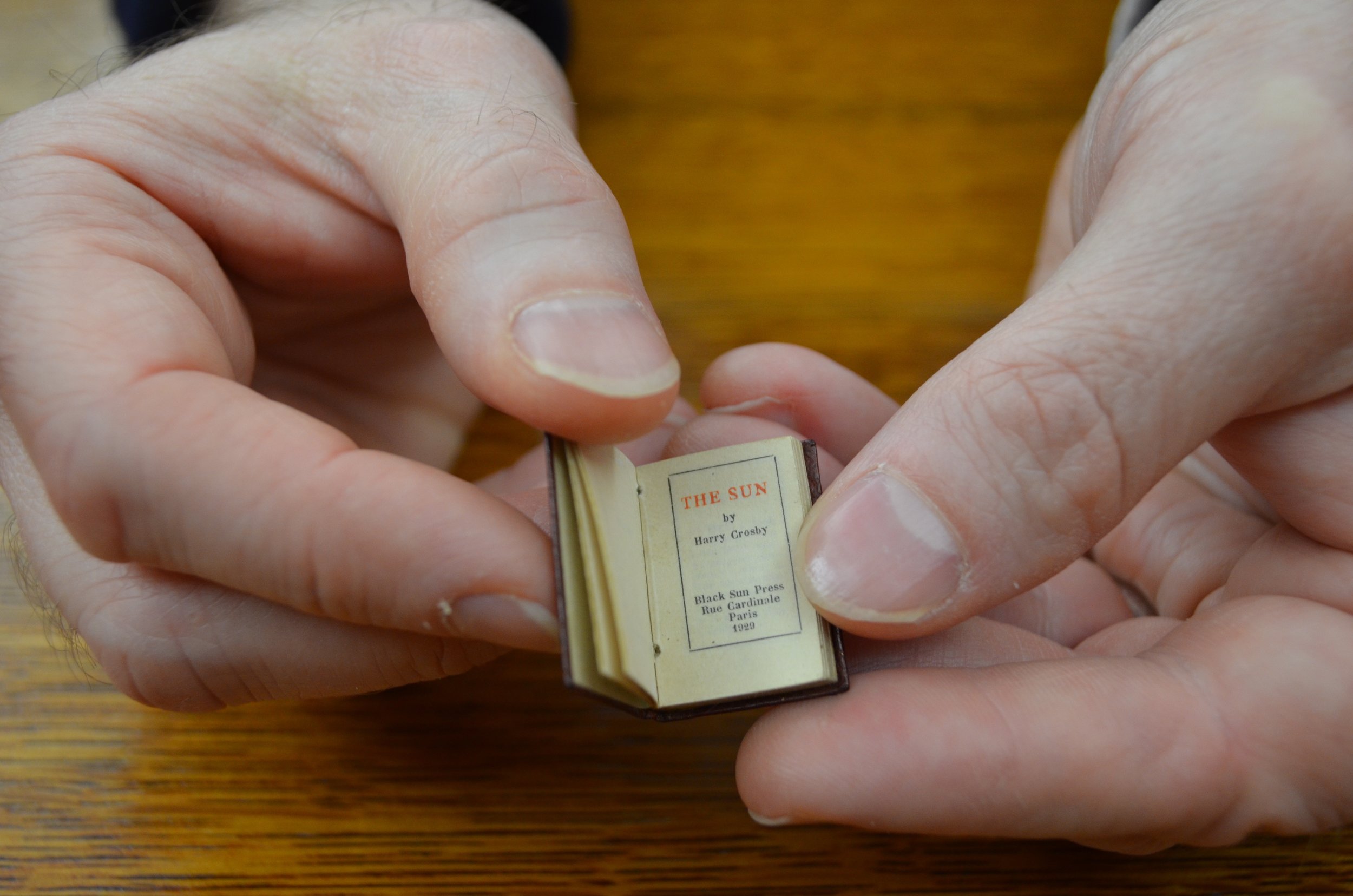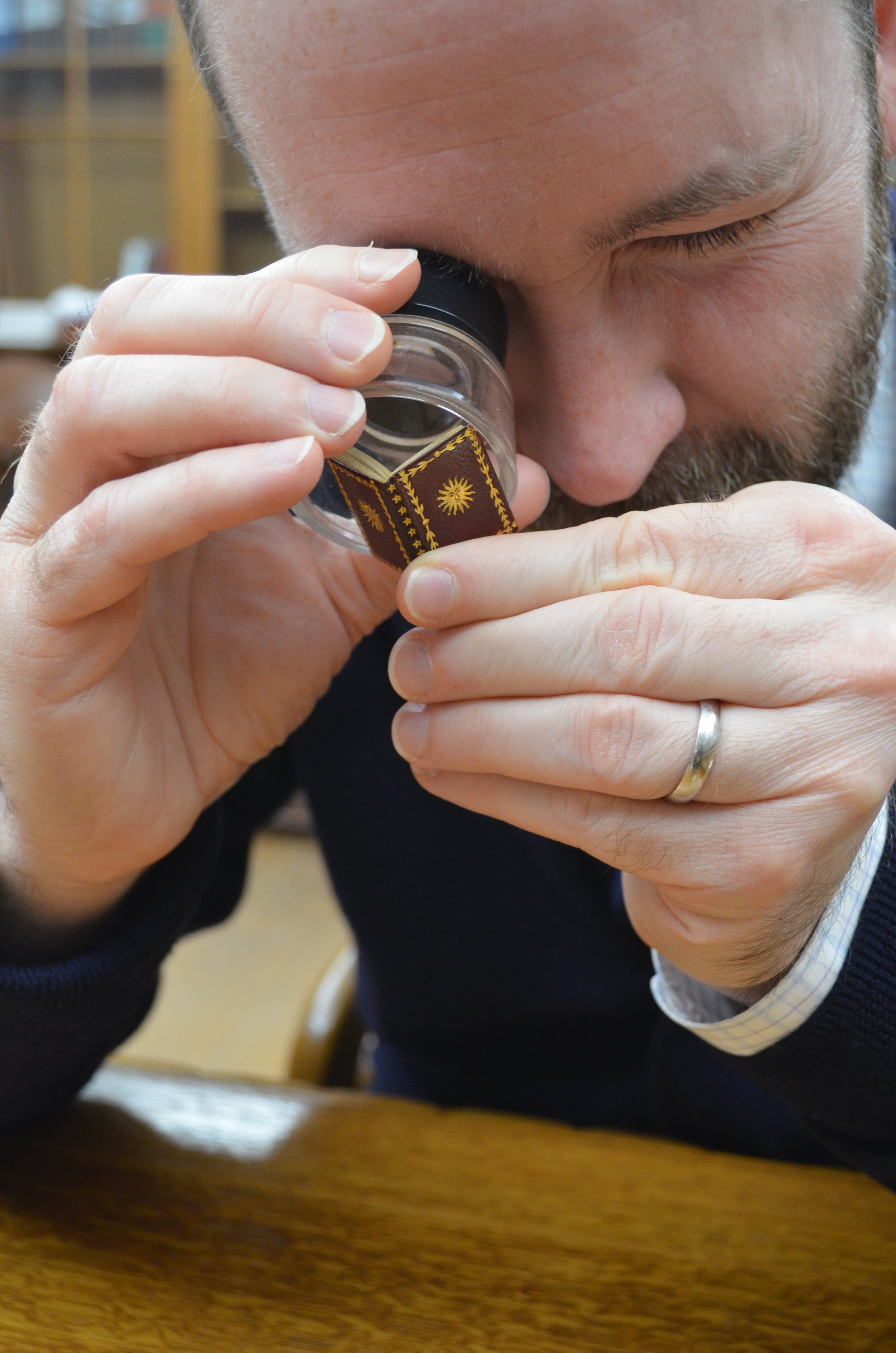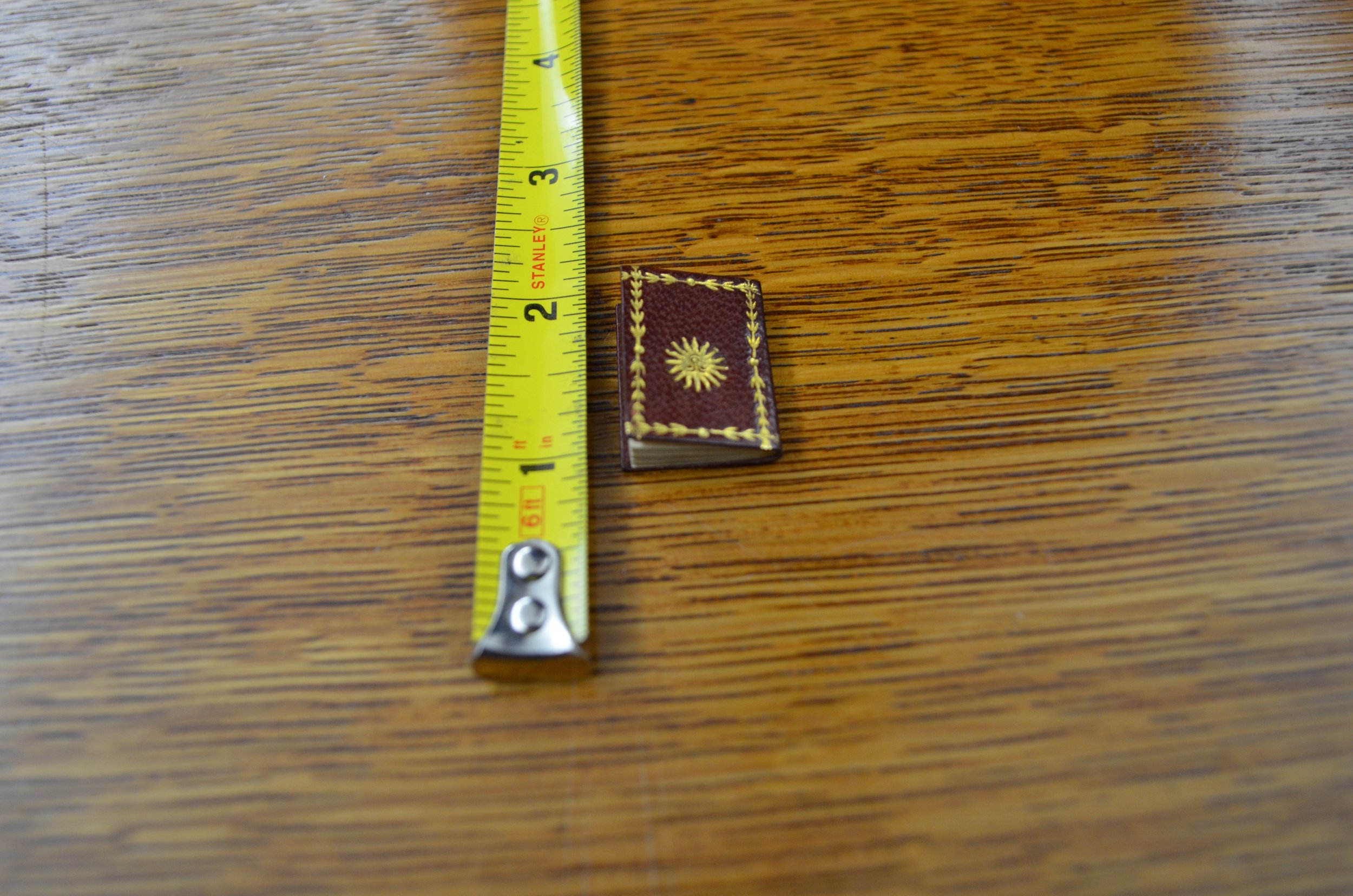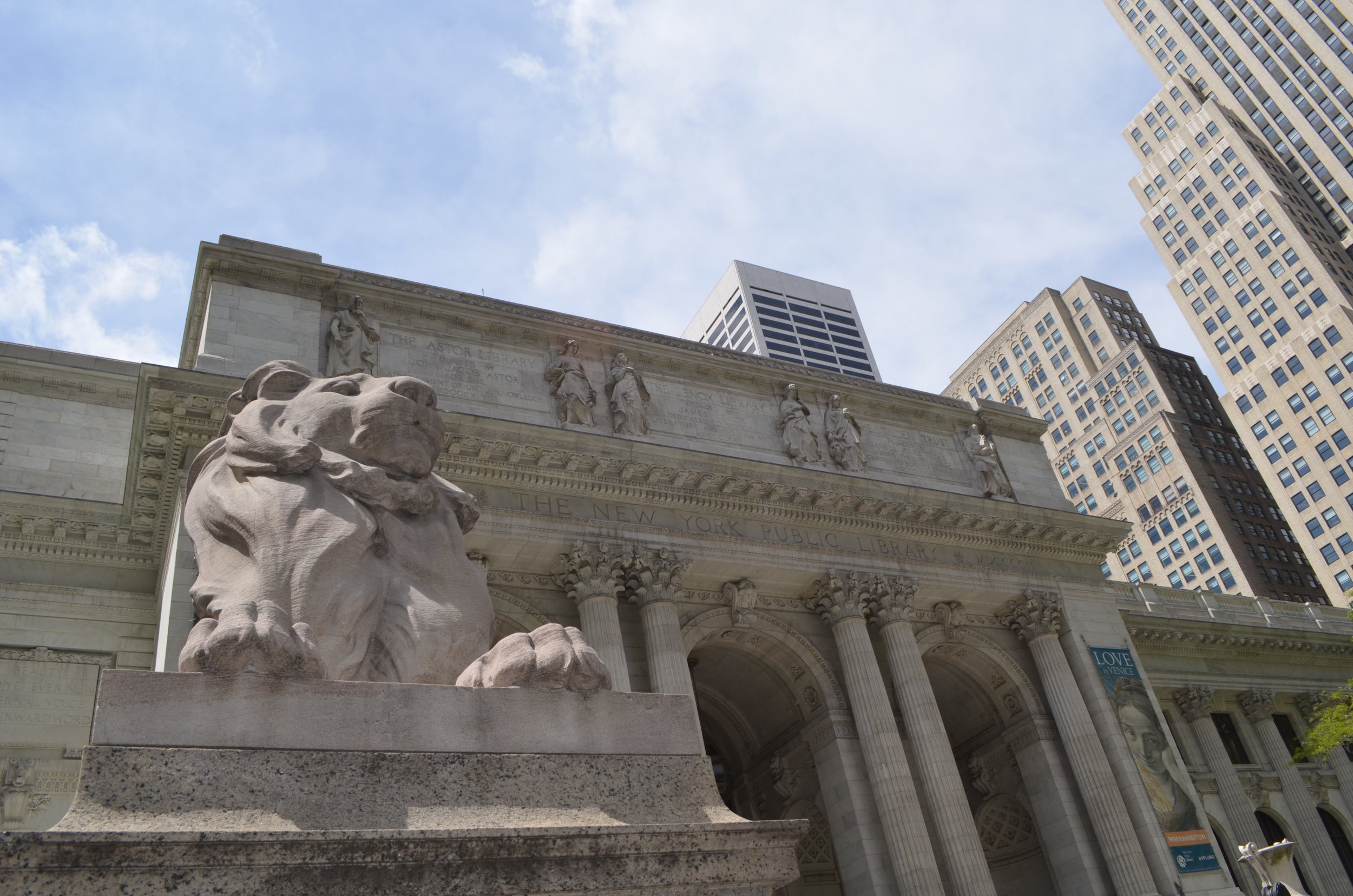1 inch by 3/4 inch
“The Sun” by Harry Crosby // Library Book // New York Public Library Main Branch
The New York Public Library’s Rare Books Division is stacked with astounding works. The collection includes the Gutenberg Bible, the only surviving copy of Columbus’s letter from 1493 announcing his encounter with the New World, and the original handwritten manuscript of Oscar Wilde's ‘The Importance of Being Earnest.’ Michael Inman, the library’s Curator of Rare Books, talks about the tiniest book in the enormous collection of 350,000 books – the only one you need a magnifying glass to read.
“Our classification for miniature books is that the height of the spine is less than three inches tall. It's a bit of an arbitrary distinction. We have around 2,000 of them. As a publishing phenomenon, they've been around for centuries. They were printed then – as is the case now – as novelty items. When you go up to the counter in Barnes & Noble and they have a little spindle rack with little books, it's the same thing. Something that's unique and quaint.
“The Sun” by Harry Crosby is our smallest book. It’s 33 pages. Only 100 copies were printed in 1929. The binding is Moroccan leather and the design on the cover, a little sun, has gilding. It’s very fragile. It was handset in three-point type. That means each letter is only a millimeter. I needed a magnifying glass and a reading glass and between the two I could read it.
The work itself is a prose poem. It’s a meditation on why the sun means so much to him, why he deifies it. He was a sun worshipper, which didn’t mean going to the beach for the afternoon. He literally worshipped the sun. He had a spiritual affinity to it. The work was interesting but I wouldn’t want to read too much more of it. He gave it his best shot. Crosby today is not remembered for his writing. He’s remembered for his wild lifestyle and his talent for spotting writing talent.
He was born into the upper crust of Boston society. His uncle was J.P. Morgan. He had everything laid out for him at his feet but he volunteered to serve in the ambulance corps in World War I. Coming out of the Edwardian Victorian era, he had a romantic sense of war. But he witnessed war’s gruesome nature as the carnage played out on the Western Front. He had a close brush with death driving wounded soldiers back from the front when a shell landed near his ambulance.
Afterwards, he just walked around in circles for no apparent reason. He was shell-shocked and understandably so. That singular event set him on a different course in his life. It affected not just his sense of himself but his broader place in the world and the meaning of life. He came back home and felt lost. It was a world he was no longer part of and that’s why he left soon after to live a life abroad in Paris.
He threw off all the old conventions saddling him and reinvented himself. He became a bon vivant and a bohemian. Drugs and sex, basically. He had an open relationship with his wife. They were known for their wild parties and their wild lifestyles. They were one of the ‘it couples’ of 1920s Paris. Together, they founded the Black Sun Press. They were the first to publish authors who, back then, were unknown and struggling – James Joyce, Hemingway, D. H. Lawrence, T. S. Eliot, Ezra Pound.
‘The Sun’ was printed just a few a few months before Crosby died. We have the actual envelope he mailed it in from Paris. I love the fact that it's addressed simply to the ‘New York Public Library, New York, USA.’ He probably wanted a copy held in in the library because people like to say their books are in our collection. And to make sure it was preserved.
Why in the world did he make a book this tiny? Just the novelty aspect of it, I suspect.
The last couple of years of his life he spiraled out of control. He died at 31 in a suicide pact with a lover. It was a huge scandal. He had this constant need for new stimulation and new experiences he never could quite satiate. People who knew him said suicide was the ultimate new experience for him. It seems a flippant remark, but he was definitely one of these people not destined to make old bones.
There was some talk at the time of it being a murder-suicide. The coroner said Crosby died several hours after the woman. The odd thing is, he had this inborn need to be constantly writing to chronicle his emotions. Yet he didn’t write a single word while he was sitting there for hours in a room with a dead person. He didn’t even leave a suicide note.”
-Michael Inman, NYPL Curator of Rare Books





